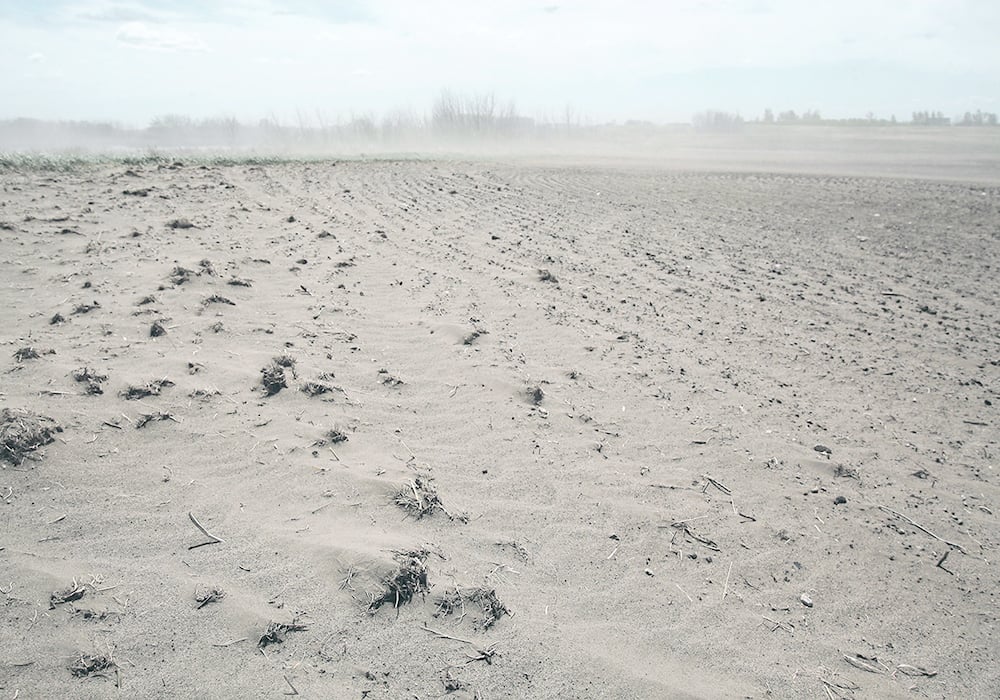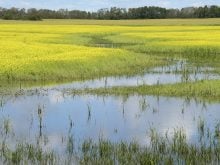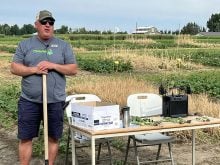Once considered soil safe, tools like highspeed seeders and vertical till need second look for sustainability
The best efforts of Canadian farmers to conserve soil haven’t necessarily improved its quality, said a University of Manitoba soil scientist.
David Lobb, speaking to the senate committee on agriculture and forestry’s soil study, said not much has changed since the Senate’s Soil at Risk report in 1984. He also addressed this topic during a 2019 senate committee meeting.
“We do not fully understand the nature of the threats to the sustainable use of soils or the management practices needed to protect or restore soil productivity. We do not fully understand the problems, therefore we do not fully understand the solutions,” he said most recently.
Read Also

Agritechnica Day 3: Hybrid drive for a combine, data standards keep up to tech change and tractors of the year
Agritechnica 2025 Day 3: Hybrid drive for a combine, data standards keep up to tech change and tractors of the year.
Lobb offered some examples, such as the causes of soil erosion.
“When it comes to soil degradation and soil productivity across the country, tillage erosion is often more important. And when it comes to sustainable soil management, it is all of them: wind, water and tillage erosion, and their interactions.”
Secondly, traditional solutions, such as keeping soil covered with plants or plant residue, do not necessarily ensure water quality is protected.
“Vegetation on the soil surface — any vegetation anywhere on the farm — will contribute to increased losses of dissolved phosphorus and to eutrophication of surface waters. In some parts of the country, like the Prairies, this is the majority of the nutrients entering surface waters,” he told the committee.
The definition of tillage has changed. Lobb said anything that disturbs and moves the soil is considered tillage.
“What we once considered conventional tillage systems and conservation tillage systems have changed with our understanding of the impacts of tillage on soils and crops and with developments in technologies,” he explained. “As an example, high-speed, high-disturbance seeders cause substantial soil loss, as does vertical tillage, both of which were mentioned last week (in testimony from other witnesses). We need to rethink how such operations can fit into a conservation tillage system today and tomorrow.”
Finally, and probably most importantly, he said the cumulative effects of soil erosion and its economic impact have not been well studied.
“As noted in my witness statement from 2019, in spite of all the conservation efforts over the past 40 years, our best estimate is that the severity of crop loss has not improved significantly. The economic loss has greatly increased. These findings have been corroborated by a recent study of soil loss, crop yields and economics in the corn belt of the United States.”
Lobb said these aren’t new issues but they have yet to be acted upon. They highlight the technical and social complexities, and why many farmers aren’t “eager early adopters” of soil conservation practices.
“Farming is a business, and changes in management require a sound, meaningful business case, which I do not think we have provided,” he said.
Laura Van Eerd, professor of sustainable soil management at the University of Guelph, agreed.
She said farmers pay the immediate cost of soil care practices.
“In contrast the on-the-farm benefits typically occur in the long-term while the more immediate benefits of soil care practices occur off the farm and are a benefit to the environment and society at large,” she said. “That disconnect is a real challenge.”
Van Eerd said she has worked for nearly 10 years on quantifying soil health but there is still no global consensus on which indicator is the best measurement.
She and several other witnesses called for more research and more training in soil science at all levels.
Asked by a committee member what has happened since the 1984 report, Van Eerd said there isn’t the data and research to determine the decline in soil health over that time.
“The complicated part is over that same time period genetics and breeding has really increased crop productivity,” she said. “In my estimation, that really has passed any decline in soil productivity.”
Lobb said his studies have shown that soil organic carbon is the best indicator for soil properties.
“Productivity would indicate that the state of the soil nationally is no better than it was in 1984,” he said. “The majority of the land has improved, but the small areas have gotten more severely eroded and caused greater losses of crop yield.
“When we look at the numbers nationally, the fact that crop yields have doubled or tripled in every crop in the last 40 years has masked any impact to soil degradation. As I tell farmers, if they had tackled soil degradation, their yields would be three to four times higher. So there is a lost profit there that seems to be not expressed, which comes back to the lack of information on economics.”
Lobb said the last published study on economics was done in Ontario in the 1980s. He sits on the intergovernmental technical panel on soils at the United Nations’ Food and Agricultural Organization and said it doesn’t have information available either.
The panel has been trying to hire an economist but has not been successful, he said.
Van Eerd said Canadian policymakers should hire someone to value soil functions and then have economists apply them to different soil care practices to motivate them to adopt.
Lobb said one problem is the move toward more land rental. There is little reason to invest in soil health if a farmer is only using the land for a year.
















